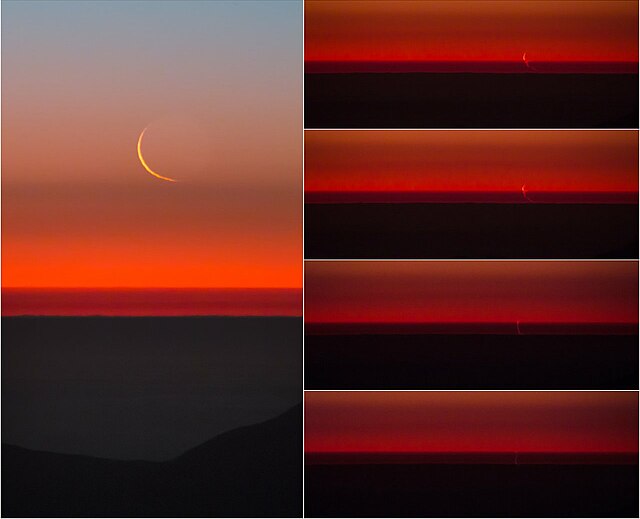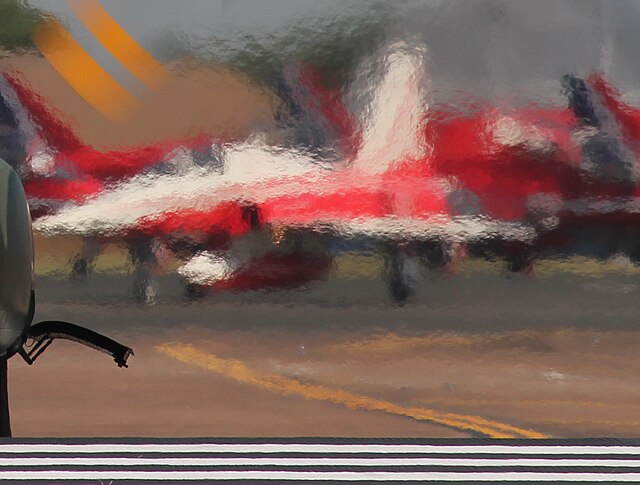Atmospheric refraction is the deviation of light or other electromagnetic wave from a straight line as it passes through the atmosphere due to the variation in air density as a function of height. This refraction is due to the velocity of light through air decreasing with increased density. Atmospheric refraction near the ground produces mirages. Such refraction can also raise or lower, or stretch or shorten, the images of distant objects without involving mirages. Turbulent air can make distant objects appear to twinkle or shimmer. The term also applies to the refraction of sound. Atmospheric refraction is considered in measuring the position of both celestial and terrestrial objects.
The atmosphere refracts the image of a waxing crescent Moon as it sets into the horizon.
Atmospheric refraction distorting the Sun’s disk into an uneven shape as it sets in the lower horizon.
A mirage is a naturally-occurring optical phenomenon in which light rays bend via refraction to produce a displaced image of distant objects or the sky. The word comes to English via the French (se) mirer, from the Latin mirari, meaning "to look at, to wonder at".
An inferior mirage seen in the Mojave Desert in a Nevada spring
A hot-road mirage, in which "fake water" appears on the road, is the most commonly observed instance of an inferior mirage.
Heat haze seen through exhaust gas from a jet engine
Above: A superior mirage of a plane on ice, McMurdo Station Below: An artificial mirage, using sugar solutions to simulate the inversion layers.






